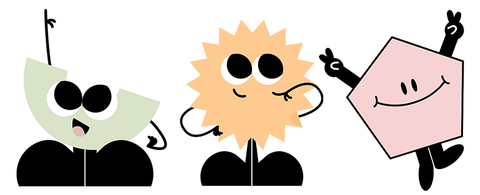Wallpaper Application
Before we start, read through our wall preparation guide to make sure your surface is perfect.
Testing is key: flatten your panels in a sunny spot until all edges are flat. Clean the wall with a lint free cloth and hot water and stick your Test Crew onto the wall when it’s dried. Keep them up for two weeks to ensure readiness.
Before the grand reveal, let your wallpaper adapt to room conditions for a day or two.
Exciting day! Freshen your wall with a lint-free cloth, lay out, plan and cut the panels for a final centred look. Every panel will feature a 2cm bleed on all sides to allow for overlapping and ensure a smooth and even look.
Ready, set, go! Ensure all edges of the sheet are flat. Use a warm hairdryer on the back of the sheet to warm up and soften the adhesive. On cold days, maintain a cosy room temperature of 23°C+ (73.4°F) before application. Please, no open windows or air conditioning!
Time for action: peel, stick, and rub, rub, rub! Ensure your wallpaper feel the pressure to stick.
• Begin at the top or the panel and lift 10cm of the vinyl backing, creating a flat lip. Ensure the backing lines are straight.
• Align one panel in the corner of the wall. Overlap a small section at the top in case the wall runs skew. If alignment is correct, firmly adhere the vinyl to the wall.
• Using both hands, slowly pull down a 30cm section of the backing, taking care not to stretch the vinyl. *Tip: Roll up both the backing and vinyl in your arms while doing the application.
• Smooth the vinyl onto the wall with even strokes from the center down and outward. Allow the vinyl to hang freely for a seamless application
• If bubbles form, lift the section and reapply. Repeat these steps for subsequent panels to ensure proper alignment.
• Trim excess vinyl with a project knife.
• Heat the panels and re-rub them after an hour, then again the next day for optimal adhesion.
• If bubbles occur, smooth out the vinyl or use a project knife to prick and smooth the affected area.
For removal:
Peel off the panel slowly at a 120° angle. Roll it onto its backing sheet, return it to the tube, and seal it for future use.
Other applications:
For large, smooth surfaces like cupboards and windows, use a mixture of half a teaspoon of dishwashing liquid and one litre of water. Spray the mixture onto the surface and the back of the vinyl. The back of the vinyl must not be sticky. Apply it to the surface then squeegee out excess water and allow it to dry.
Wallpaper cut offs can be used to cover drawers, and other small objects. Cut elements out and use them in other areas of the room or in another space.


